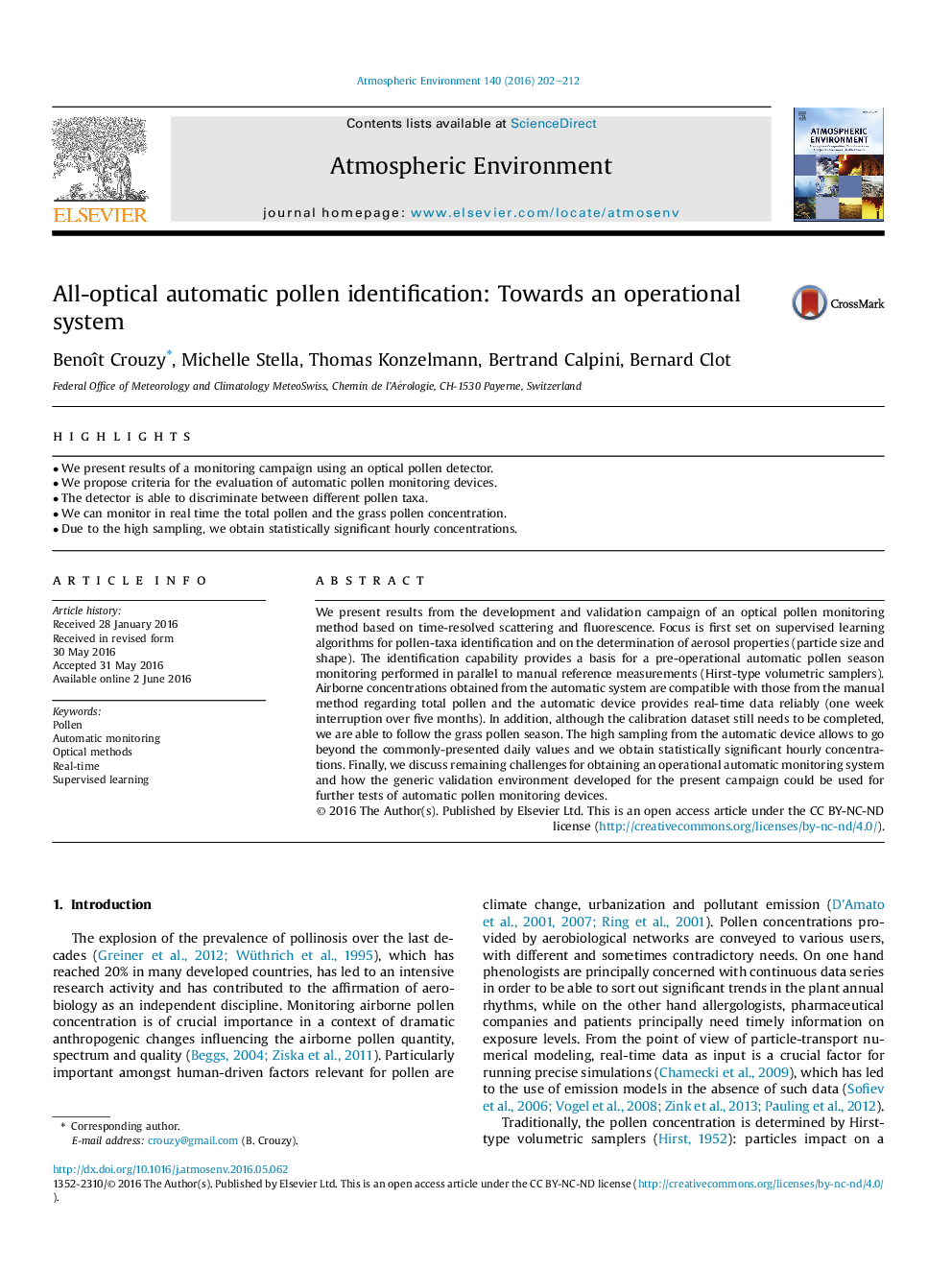| Article ID | Journal | Published Year | Pages | File Type |
|---|---|---|---|---|
| 6336175 | Atmospheric Environment | 2016 | 11 Pages |
Abstract
We present results from the development and validation campaign of an optical pollen monitoring method based on time-resolved scattering and fluorescence. Focus is first set on supervised learning algorithms for pollen-taxa identification and on the determination of aerosol properties (particle size and shape). The identification capability provides a basis for a pre-operational automatic pollen season monitoring performed in parallel to manual reference measurements (Hirst-type volumetric samplers). Airborne concentrations obtained from the automatic system are compatible with those from the manual method regarding total pollen and the automatic device provides real-time data reliably (one week interruption over five months). In addition, although the calibration dataset still needs to be completed, we are able to follow the grass pollen season. The high sampling from the automatic device allows to go beyond the commonly-presented daily values and we obtain statistically significant hourly concentrations. Finally, we discuss remaining challenges for obtaining an operational automatic monitoring system and how the generic validation environment developed for the present campaign could be used for further tests of automatic pollen monitoring devices.
Related Topics
Physical Sciences and Engineering
Earth and Planetary Sciences
Atmospheric Science
Authors
Benoît Crouzy, Michelle Stella, Thomas Konzelmann, Bertrand Calpini, Bernard Clot,
